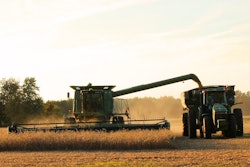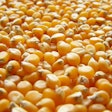
With the effects of climate change on ag abounding, one thing that is often forgotten in discussing the future of feed and grain production is the way soil is changing. Concern for global emissions seemingly overrides any trepidation about the integrity of soil and the integral nutrients that support vital crops in grain production. A soil additive used thousands of years ago in the Amazon basin of South America for improved yields may pose one solution: biochar.
According to the U.S. Department of Agriculture's (USDA) Northwest Climate Hub, "Biochar is a stable solid, rich in carbon, that is made from organic waste material or biomass that is partially combusted in the presence of limited oxygen. The qualities that make up biochar vary depending upon the material that it comes from (feedstocks; i.e., timber slash, corn stalks, manure, etc.) and the temperature at which combustion occurs."
A main component of biochar that contributes to significantly more productive soil is recalcitrant carbon, an element that can last for dozens, hundreds, and even thousands of years. It provides nutrients via mineralization processes, adds resistance to natural degradation and erosion over time, makes for a more hospitable environment for helpful microbes, and adds moisture. There are multiple types of biochar to reach certain goals for a producer, but the upstream benefits in life-cycle assessments (LCAs) for feed and grain businesses may be uniform among them.
The pros of biochar on LCAs
- Using biochar as a soil additive benefits the atmosphere just as much as the ground. One of the most pressing issues in mitigating the impacts of climate change is managing the amount of carbon dioxide polluting the air and, by creating biochar as a more widespread agricultural practice, some of that carbon can be deposited instead back into the earth. Organic materials like trees, plants and soil can be thought of as sponges for carbon, acting as a natural source of carbon sequestration (putting carbon in the ground rather than the atmosphere). Biochar is the sped-up implementation of this process, and by making it a more widespread practice in agriculture, alongside renewable energy, it can mean carbon neutrality for producers – neither adding nor removing carbon dioxide from the air.
- Biochar-boosted soil makes for a considerably more hospitable environment for good microbes and fungi, meaning less reliance on artificial fertilizers. According to the U.S. Biochar Initiative (USBI), "because of biochar's long-term persistence in soil (more than 2,500 years and counting), all the associated benefits of nutrient retention, water retention and overall soil fertility are longer lasting than with common fertilizers alone." To further refine the improvements biochar can have on crop yields and health, some studies suggest biochar-based fertilizers (BCFs) have more effective results on soil fertility than other fertilizers or biochar alone.
- By using biochar as a soil additive, the carbon particles allow for better water retention – perhaps meaning less water used to grow crops in total. As stated earlier, biochar acts much like a sponge for carbon. The same can be said of its ability to hold moisture. Field tests conducted in Europe on sandy, loamy and clay soils showed that biochar was significantly more prolific in water retention than compost, and in most cases, better than the control element of artificial fertilizer. The study found biochar's merits to equal those of perlite, the porous substance included in commercial potting mixes. Many studies agree on the point that biochar is particularly effective in sandy regions.
The cons of biochar on LCAs
- In some select cases, biochar can actually harm the environment. Studies have demonstrated that biochar can change the chemical and physical properties of soil to inhibit microorganism growth, can harm waterways and cause eutrophication, and may raise issues with phytotoxicity. Further research needs to be done on the consequences of biochar use, but suffice it to say that biochar won't work for every producer. Additionally, improper selection of biomass in developing the biochar may result in the release of heavy metals and other unwanted substances into the soil. Strict adherence to the correct development and application of biochar is essential to preventing any repercussions down the road.
- Biochar can take time to make a difference. Biochar needs to be activated and inoculated, potentially taking three to six months to fulfill its purpose. Biochar, as previously mentioned, acts much like a sponge, meaning it needs to soak up the necessary moisture and nutrients before it can also become hospitable to microbes. This makes it a time investment that a producer must be willing to wait on and properly care for before it can have a positive environmental impact and turn a profit.
Biochar just might become a necessity in the future, as it has been shown to overall improve the health of the environment, meaning additional support for a healthy business LCA. Working with producers who place emphasis on environmental protection and sustainable innovations in agriculture, despite whether that includes the application of biochar on a significant scale, is essential to protecting natural resources for years to come.

















